I woke up early on a radiant Sunday morning; the sunlight was streaming through the window blinds as I tumbled out of bed. It was 1 September 2019 and I was scheduled to conduct my first Caribbean Heritage tour of the year. I felt a slight flutter in my stomach (if I am honest, it was more like a tsunami) because I imagined stressful scenes such as forgetting my route and leading the group on a mystery tour throughout the museum! However, I had to tell those voices to ‘shut up’, slaying those demon thoughts like a dragon, banishing them to the ether where they rightfully belong.
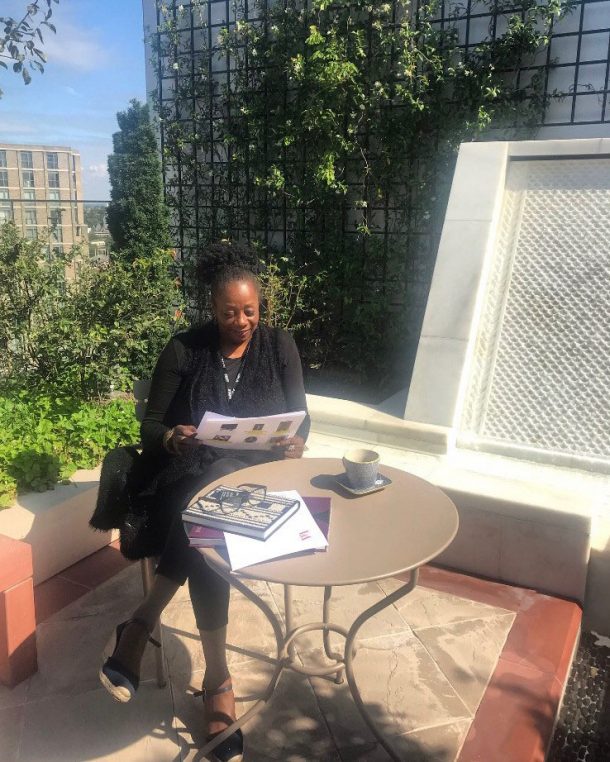
On arrival at the train station I checked the first of my trains programmed to arrive on time. This gave ample opportunity to check my notes and rehearse my tour narrative. At the V&A my tummy began pulsating again, so I quickly made my way to the staff canteen for a strong cup of coffee to quell my nerves. It was then I remembered I wasn’t wearing my gold bangles that I wanted as a prop for the last item on my tour, and I’d also forgotten my watch, so I had to rely on my mobile phone to check the time – and only just managed to arrive at the meeting point for 2.45pm, smoothing my dress and regaining a sense of composure.
The foyer was a hub of noise and activity and immediately I saw three penguin boards (instead of the usual one advertising the tour) and thought ‘Oh No, I am up against a Fashion in Focus and a Female Voices tour!’ I need not have worried as I saw a lady with a beam like an Oscar winner who asked eagerly if I was the tour guide for Caribbean Heritage. She commandeered a lovely group to attend with her.
Another couple also expressed keen interest and suddenly I was ready to go like a gun firing at the start of the 100 meters sprint, although I am no Usain Bolt.
As I began my tour, all my nerves completely disappeared, and I was on a voyage in a time capsule transcending the time zone back and forth between seventeenth and twentieth centuries. One of the items that drew a remark was the portrait of Francis Williams, a freed black Jamaican scholar of the 18th century. A member of the group enquired why I was showing them this portrait, and I exclaimed that in the 18th century the term Jamaican was used for a person of European descent, and it was highly likely that Francis Williams would have been addressed as a ‘Negro’ in 1745 when the painting was made.
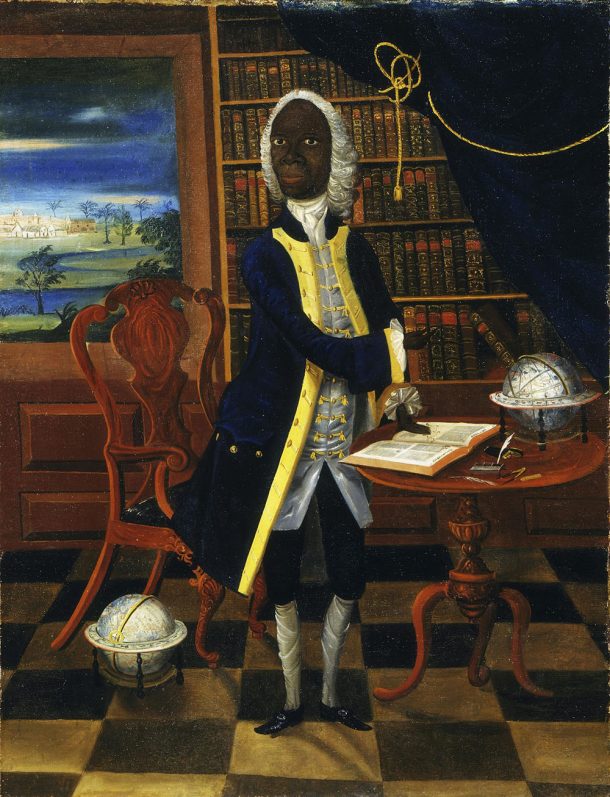
P.83-1928 © Victoria and Albert Museum, London
There were puzzled looks, but the portrait fitted the theme we were exploring through objects: the fluid identity of the Caribbean peoples formed in the cauldron of history and experience. I was pleased the group were engaged in the subject matter as we traipsed up and down stairs and twisted and twirled our way through the galleries, gathering pace as we worked our way through our objects. All my initial concerns about losing my way were now a long and distant memory.
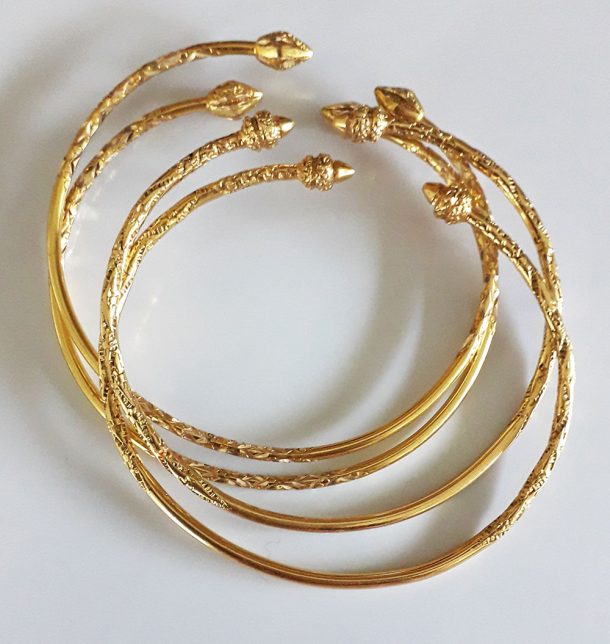
The tour group was occupied in thought as we approached the last object, a beautiful jewelled bangle, and while I was not wearing my own gold bangles to show how a legacy of a peoples can be passed down via ornaments, I still wanted to tell the stories, and the ‘Warrior’ bracelet created by Trinidadian Barbara Jardine (who has Scottish ancestry) didn’t disappoint. One end of the bangle is the head of a female with a resolute face. She resembles a high priestess of ancient lineage? It is such an exquisite piece of jewellery, and yet so poignant with a drop of blood red garnet stone wedged in the tip of bangle. Jardine has written; ‘In her hands she holds a drop of blood. Is it her own blood or sacrificial?’ It is left up to viewer to decide.
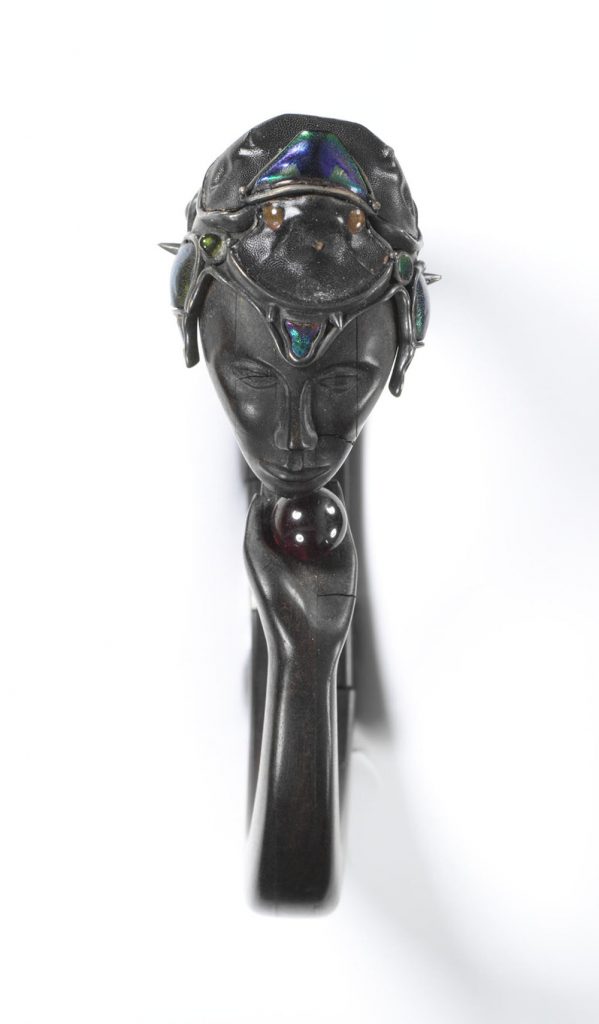
It could be argued the Warrior bracelet provokes a memory of the regions dark past where historically during the slave trade era, bangles were also used as a form of currency in West Africa? Interestingly, handmade gold or silver bangles are still being made in the Caribbean, and given as presents to a new-born child as part of their African Caribbean heritage.
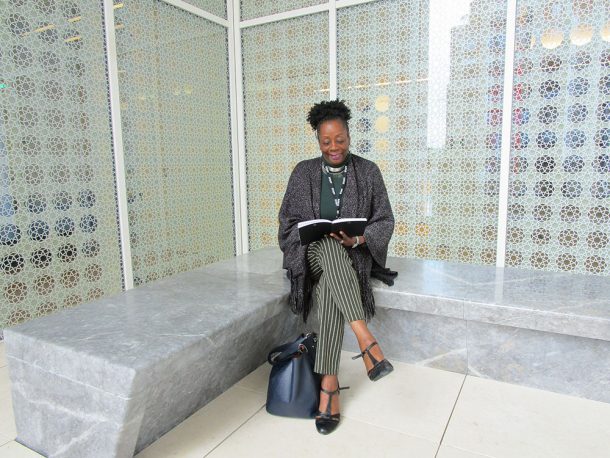
The group thanked me, and I walked away satisfied that I had managed to complete my first Caribbean Heritage tour of the year.
I left the V&A with the realisation that working as a guide is a work in progress. The cool breeze at my back as I left the museum helped as I made my way back down to the underground with a calm and warm sensation my stomach.



I know this blog post was a long time ago, but it was very generous of Joy to be so honest about she felt before her first tour. I guess she must be an expert by now and inspiring other volunteers to lead tours. Thank you Joy.